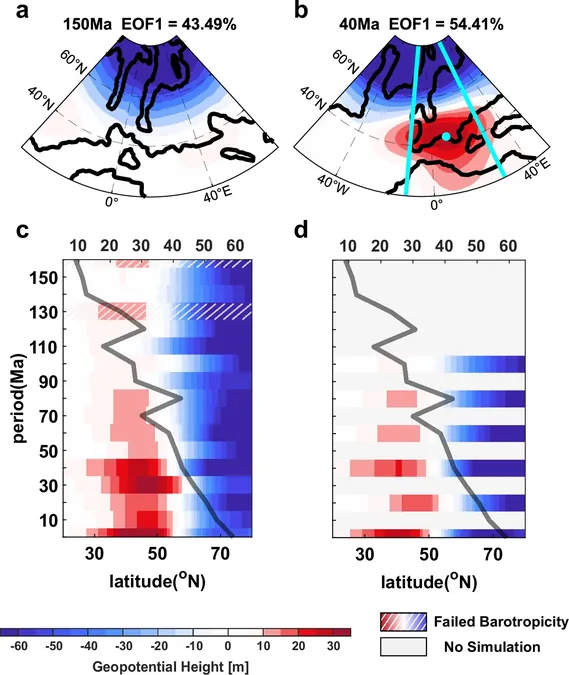
Unveiling the Secrets of the North Atlantic Oscillation: How It Shaped Our Planet!
2025-04-02
Author: Wei
Introduction
Recent groundbreaking research has delved into the origins and evolution of the North Atlantic Oscillation (NAO), shedding light on its profound influence on Earth's geological and climatic patterns. This significant study, spearheaded by a dedicated research team from Peking University (PKU), including Associate Professor Nie Ji and Dean Hu Yongyun from the Institute of Ocean Research, was published in the esteemed journal *Nature Communications*.
The Role of the North Atlantic Oscillation
The North Atlantic Oscillation is a powerhouse of climate dynamics, driving temperature changes, precipitation patterns, and storm activities across diverse regions such as Europe, China, and North America. What’s fascinating about this research is its discovery of a coherent relationship between the NAO and the evolution of Earth's continents, mountains, and oceans, revealing crucial insights into our planet's climate variability throughout history.
Research Methodology
The ambitious study utilized advanced time-slice simulations that span an impressive 160 million years, tracing the evolution of atmospheric pressure patterns as the North Atlantic Ocean widened. The researchers even conducted idealized experiments to determine whether a minimum ocean basin width is necessary for the formation of the NAO. Additionally, they simulated the uplift of the Rocky Mountains to examine how these topographical changes intensified the NAO's impact roughly 40 million years ago.
Key Findings
Some pivotal findings from this research include:
1. The NAO is believed to have originated approximately 80-60 million years ago when the North Atlantic expanded to roughly 40 degrees longitude.
2. A significant land-sea temperature contrast served as a catalyst for the NAO, effectively shaping westerly winds and the paths of storms.
3. The uplift of the Rocky Mountains around 40 million years ago played a crucial role in intensifying the NAO's effects.
4. Plate tectonics have been identified as a driving factor behind the evolution of atmospheric circulation over geologic time.
Future Research Directions
However, as promising as these findings are, the researchers noted certain limitations in their study that warrant further exploration. In particular, additional investigations are necessary to better understand the leading empirical orthogonal function (EOF) of extratropical geopotential variation across the Northern Hemisphere. Moreover, researchers hope to untangle the complex interplay between climate, the Tibetan Plateau, and the Rocky Mountains in shaping atmospheric circulation in the Northern Hemisphere.
Conclusion
This fascinating research not only enriches our understanding of the NAO but also holds potential implications for refining climate prediction models, giving scientists and climate enthusiasts alike a better grasp of our planet's dynamic weather systems. Stay tuned—this is just the beginning of unraveling the mysteries of our ever-changing climate!





 Brasil (PT)
Brasil (PT)
 Canada (EN)
Canada (EN)
 Chile (ES)
Chile (ES)
 Česko (CS)
Česko (CS)
 대한민국 (KO)
대한민국 (KO)
 España (ES)
España (ES)
 France (FR)
France (FR)
 Hong Kong (EN)
Hong Kong (EN)
 Italia (IT)
Italia (IT)
 日本 (JA)
日本 (JA)
 Magyarország (HU)
Magyarország (HU)
 Norge (NO)
Norge (NO)
 Polska (PL)
Polska (PL)
 Schweiz (DE)
Schweiz (DE)
 Singapore (EN)
Singapore (EN)
 Sverige (SV)
Sverige (SV)
 Suomi (FI)
Suomi (FI)
 Türkiye (TR)
Türkiye (TR)
 الإمارات العربية المتحدة (AR)
الإمارات العربية المتحدة (AR)